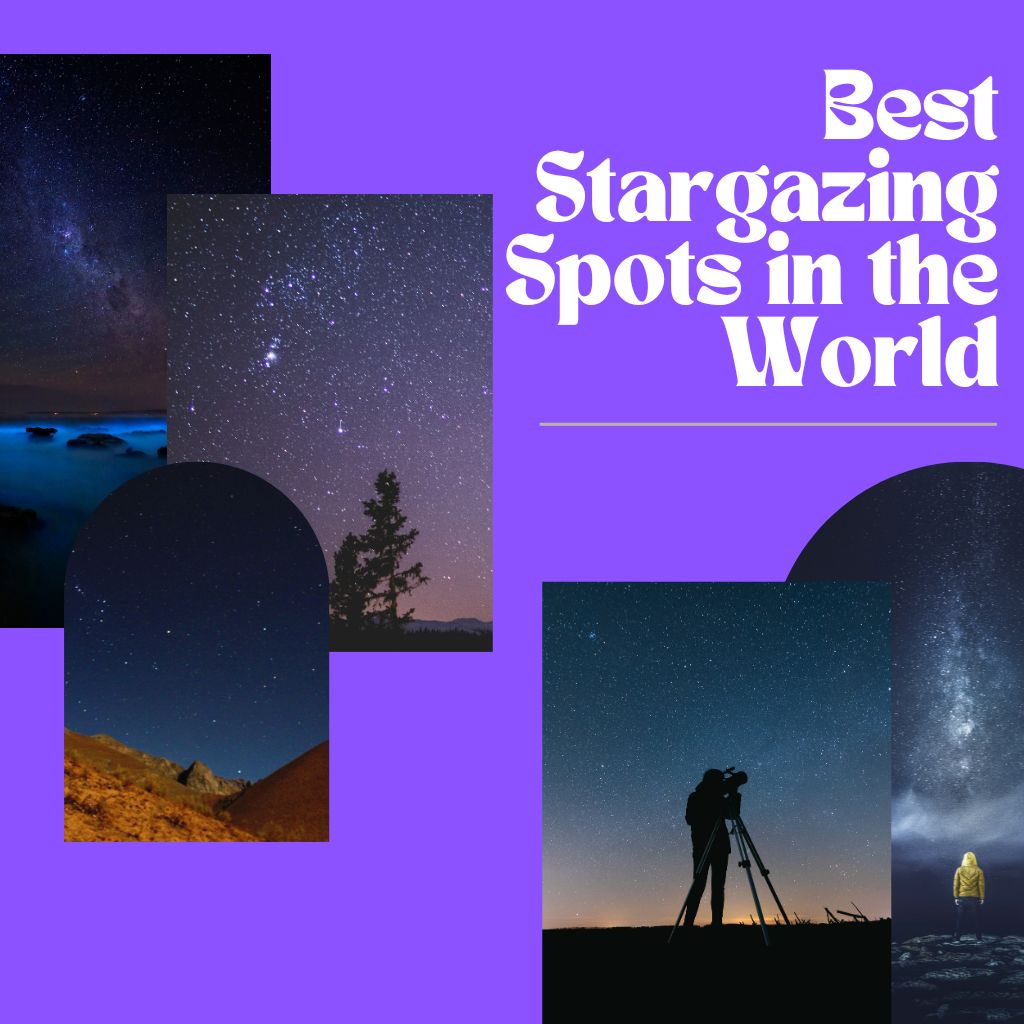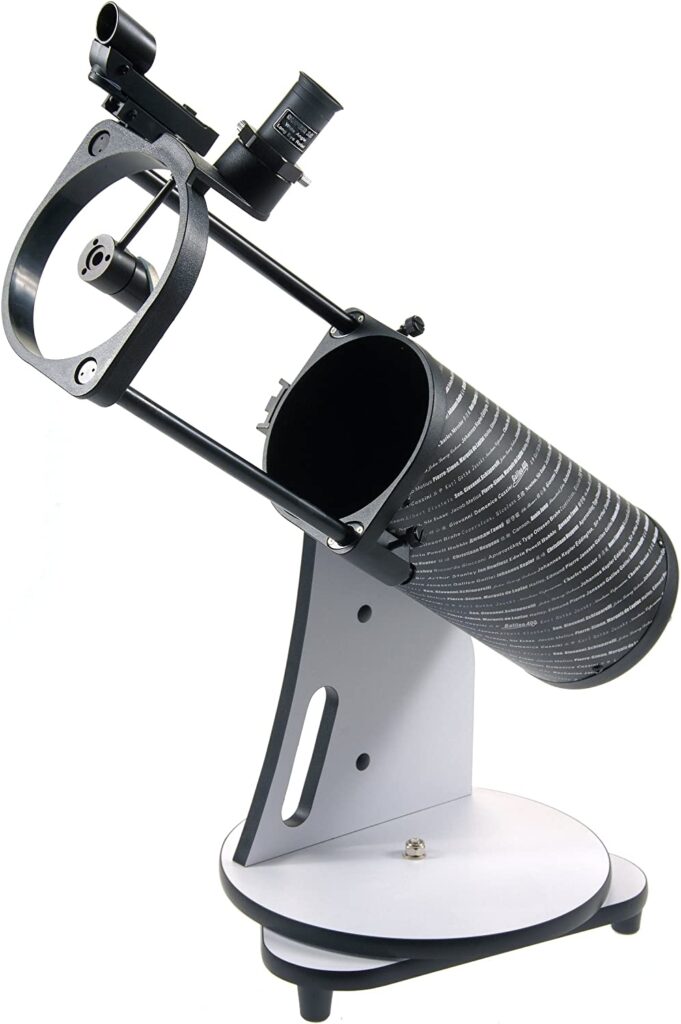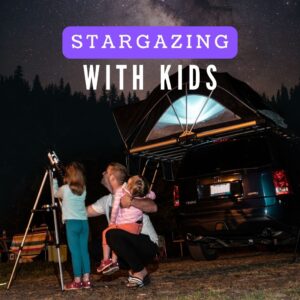This site contains affiliate links to products. I may receive a commission for purchases made through these links.
While you can enjoy a starry night from just about any location with limited light pollution, some spots on our planet offer an extraordinary experience that can only be described as celestial.
Unique vantage points around the world allow us to gaze upon constellations, planets, and celestial phenomena that are either exceptionally vivid or, in some cases, only visible from specific locations.
Imagine standing atop the Mauna Kea Observatory in Hawaii to catch a glimpse of the elusive Messier 87 galaxy or cruising the Atacama Desert in Chile to view the radiant heart of the Milky Way like never before.
From isolated desert expanses to the Arctic tundra, the world has beautiful destinations for celestial connoisseurs.
Whether you’re an amateur astronomer armed with a simple telescope or an enthusiast with a high-tech telescope, there’s likely a magical place on this list for you.
In this post, we’ll guide you through the 31 best stargazing spots in the world, revealing the magic of the night sky from each location.
We’ll tell you what makes each location special, what you can expect to see there, and why it deserves a spot on your bucket list.
1. Mauna Kea, Hawaii
Perched on a dormant volcano, Mauna Kea Observatories in Hawaii offer an unrivaled vantage point for stargazing. At a high altitude and with minimal light pollution, it’s one of the best places on Earth to observe the night sky.
Here, you can glimpse celestial objects usually obscured from the sight of city dwellers. You can witness both Northern and Southern Hemisphere celestial wonders, including the bright stars of Orion’s Belt and the Southern Cross.
If you’re lucky, you might also catch a meteor shower or two, making the experience even more magical.
2. Atacama Desert, Chile
The Atacama Desert is one of the driest places on Earth, leading to clear nights and few clouds. This arid landscape offers some of the darkest skies in the world, designated by the International Dark Sky Association as a Dark Sky Sanctuary.
With the Alma Observatory nearby, it’s a prime location for both amateur astronomers and professionals.
Constellations not visible in the Northern Hemisphere bring the southern sky alive.
From here, you can see the Milky Way with the naked eye, a breathtaking display of our galaxy’s complexity and beauty.
3. NamibRand Nature Reserve, Namibia
NamibRand Nature Reserve in Namibia is one of the only International Dark Sky Reserves in Africa. The nature reserve offers little light pollution and serves as an oasis of dark skies on the continent.
Here, you can witness the natural wonders of the African night sky.
Thanks to the reserve’s location and the clear night skies, you can observe constellations, bright stars, and even the Magellanic Clouds—two dwarf galaxies not visible from the Northern Hemisphere.
4. Cherry Springs State Park, Pennsylvania, USA
Cherry Springs State Park is located a few hours north of major East Coast cities and is one of the best stargazing spots on the American East Coast.
Despite its relative proximity to city lights, the park manages to offer incredibly dark skies, largely thanks to efforts to minimize artificial light.
The Orion SkyQuest XT8 Classic Dobsonian Telescope would be a perfect companion here, enhancing your view of the Milky Way.
For more information about this telescope, check out this review: Orion SkyQuest XT8 Review (#1 Beginner Telescope)
5. Death Valley National Park, California, USA
Death Valley National Park is known for its extreme temperatures and status as an International Dark Sky Park. Imagine enhancing your celestial experience here with the Celestron NexStar 6SE Telescope.
This telescope is superbly equipped to capture bright stars, planets, and even the Milky Way in eye-popping detail.
Death Valley National Park is one of the best places in the United States to experience truly dark skies, away from the impact of light pollution.
On a clear night, the sky offers a plethora of bright stars, planets, and even the Milky Way.
Death Valley’s unique geographic conditions make it an ideal setting for enjoying the universe’s natural wonders.
Read the complete review of the telescope: Nexstar 6SE Telescope Review (Read This First!)
6. Bryce Canyon National Park, Utah, USA
Bryce Canyon National Park is another jewel in the United States’ national parks system, boasting Dark Sky Park status. The park’s elevation and dry climate contribute to some of the country’s most spectacular night skies.
Adding the SkyWatcher Heritage 130P telescope to your stargazing toolkit would be a game-changer. The park offers celestial views of star clusters, bright planets, and even distant galaxies. It’s a must-visit for anyone passionate about the night sky.
7. Jasper National Park, Canada
As the world’s second-largest Dark Sky Reserve, Jasper National Park in Canada offers almost no light pollution and remarkably clear skies. The Northern Hemisphere constellations are on grand display, and it’s also a fantastic spot for viewing the Northern Lights.
During the fall, park rangers lead public stargazing events where you can learn about constellations, planets, and the basics of astronomy.
The park’s remote location and altitude make it a stellar choice for night sky observation.
8. Big Bend National Park, Texas, USA
Big Bend National Park is situated along the US-Mexico border. It offers some of the darkest skies in North America. The park is an excellent location for stargazing, away from the artificial lights of big cities.
Celestron NexStar 8SE Telescope, with its wide aperture, would be excellent for catching the Milky Way arching across the sky, visible constellations, and even occasional meteor showers.
Read more about this telescope: Celestron NexStar 8SE Telescope Review (Read Before Purchase)
9. Pic du Midi Observatory, France
Located in Pyrénées National Park, the Pic du Midi Observatory is Europe’s highest planetarium, offering one of the most unique stargazing experiences. It sits high, providing exceptionally clear night skies and minimal light pollution.
On a clear night, the site offers panoramic night sky views, including Northern and Southern Hemisphere stars.
The observatory adds an educational layer, making it a comprehensive experience for astronomy enthusiasts.
10. Canary Islands, Spain
The Canary Islands is set in the Atlantic Ocean off the coast of Africa. These islands offer clear skies, minimal light pollution, and a high altitude, making them ideal for observing the night sky.
You can see various constellations, bright stars, and other galaxies here.
The Canary Islands are particularly known for their superb visibility of planets and stars, making them a hotspot for amateur and professional astronomers.
11. Kruger National Park, South Africa
One of Africa’s largest national parks, Kruger National Park, offers a different kind of wildlife—the celestial kind. With little artificial light to disturb the view, the park offers stunning views of the southern night sky.
You can see the Southern Cross, bright stars, and even the Milky Way from here. During the winter, the sky is filled with a blanket of stars stretching across the horizon. It’s a breathtaking experience to combine a safari during the day with star gazing at night.
12. Iriomote-Ishigaki National Park, Japan
Although not officially designated by the International Dark Sky Association, the Iriomote-Ishigaki National Park, located in the Okinawa Prefecture, offers stargazers a unique experience.
Its remote location with natural beauty makes it a fantastic place for observing the night sky.
The park’s island setting and minimal light pollution offer spectacular views of the Milky Way, 84 of the 88 constellations, and other celestial bodies.
13. Elqui Valley, Chile
Known for its clear nights and high-altitude locations, Elqui Valley in Chile has one of the highest numbers of clear nights in the Southern Hemisphere. It is an International Dark Sky Sanctuary where you can view starts with the naked eye or with a powerful telescope.
The starry night sky here is exceptionally vivid, displaying Southern Hemisphere constellations and even the Southern Lights on rare occasions.
It’s a prime spot for those who want to hallucinate while immersing themselves in the grandeur of the universe.
14. Cosmic Campground, New Mexico, USA
The Cosmic Campground in New Mexico is an International Dark Sky Sanctuary aimed at providing a public place to enjoy the night skies with as little light pollution as possible.
With one of the darkest skies in the United States, a telescope like the SkyWatcher EvoStar 72 unveils new layers of meteor showers and the brightest stars.
It’s an excellent place for seasoned astronomers and those new to stargazing, offering an unfiltered view of the cosmos.
15. Sutherland, South Africa
Known for being home to the Southern African Large Telescope, Sutherland boasts some of the clearest night skies on the African continent. It is a remote town in South Africa’s Northern Cape, far enough from city lights.
The Milky Way is often visible to the naked eye here, stretching across the sky like a celestial river.
You can often easily see Orion, Scorpius, and other stunning constellations, along with Jupiter and Saturn. You may even spot an occasional meteor shower gracing the star-filled skies as night falls.
16. Warrumbungle National Park, Australia
A designated International Dark Sky Park, Warrumbungle National Park, is about six hours from Sydney. Its unique feature is its elevated terrain, providing skygazers with an unobstructed view of the heavens.
On a clear night, you can see the Magellanic Clouds and the Milky Way arcing from horizon to horizon.
There are numerous star clusters and nebulae that add to the celestial tapestry.
The hiking trails within the park also offer different vantage points for stargazing, combining the natural beauty of the Earth and sky.
17. Sedona, Arizona, USA
Though not an official dark sky reserve, Sedona enjoys a high elevation and has implemented strict lighting codes to preserve its dark sky status.
Famous for its red rock formations, the region is equally stunning for night skies. With the visibility here, a Celestron AstroMaster 130EQ would allow you to explore a variety of constellations and planets in unprecedented detail.
You can discern objects like the Andromeda Galaxy and the Orion Nebula, making it a haven for both amateur and experienced astronomers.
18. Galloway Forest Park, Scotland
This was the UK’s first International Dark Sky Park in southwestern Scotland. One of the park’s unique characteristics is its location near the sea level, giving it a different atmospheric clarity.
You can sometimes see the Northern Lights and constellations like Cassiopeia and Ursa Major.
Meteor showers are also frequent occurrences, adding a touch of magic to the already enchanting night sky. It’s a magnificent place for capturing the beauty of the universe.
19. Isle of Coll, Scotland
Isle of Coll, Scotland (Wild for Scotland)
This Scottish island is one of the few places worldwide with the International Dark Sky Community designation. Being far from city lights, Coll offers an incredible view of the Milky Way and, often, the Northern Lights.
The island also provides unique terrain for stargazing, including beaches and hills. The Pleiades cluster and other star clusters are often visible, adding to the allure of this remote island paradise for stargazers.
20. The Azores, Portugal
Not far from the mainland, these islands in the middle of the Atlantic Ocean offer a unique vantage point for observing the cosmos. It is a UNESCO World Heritage Site for its rich biodiversity.
The Azores, Portugal, also features dark skies ideal for stargazing, where constellations and bright planets dominate the sky.
From the Pleiades to the Milky Way, the celestial views are as fascinating as the islands themselves. When night falls, the sky turns into a sea of stars, making it an unforgettable experience.
21. Joshua Tree National Park, California, USA
A renowned national park for its geological features and unique flora, Joshua Tree also boasts an International Dark Sky Park designation. The desert air and relative isolation from artificial lighting make the night sky extraordinarily clear.
Prominent constellations and bright celestial bodies, including Venus and Mars, frequently appear here.
For those interested in deeper sky objects, you can discern nebulae and distant galaxies, especially during the new moon.
22. Cévennes National Park, France
This French national park has been awarded International Dark Sky Reserve status, providing a great European stargazing experience. It is characterized by its highlands and deep valleys, offering multiple viewpoints for celestial observation.
The sky reveals the Milky Way in all its splendor, along with star clusters and brighter planets.
The park’s night sky is often a canvas of shooting stars, adding a sense of unpredictability and excitement to your stargazing adventure.
23. Denali National Park, Alaska, USA
This expansive national park in Alaska is a top spot for viewing the Northern Lights. With its extreme northern latitude and distance from city lights, Denali provides one of the most dramatic backdrops for aurora watching.
Besides the mesmerizing Northern Lights, the Celestron StarSense Explorer LT 80AZ can enhance your experience, allowing you to see constellations and bright stars.
Some of the brightest stars can be seen sparkling against starry skies on especially clear nights.
See also: StarSense Telescopes: A Detailed Overview of the Collection
24. Mont-Mégantic, Quebec, Canada
Mont-Mégantic is situated in southeastern Quebec and holds the honor of being the world’s first International Dark Sky Reserve. The absence of city lights and its high-altitude terrain make it a prime location for astronomical observation.
The Milky Way is often visible, stretched like a silvery band across the sky.
The darker skies allow for viewing star clusters and even some galaxies, adding to this location’s enchanting experience for skygazers.
25. Exmoor National Park, England
One of the first places in Europe to be designated an International Dark Sky Reserve, Exmoor National Park is situated in southwest England. Here, you can observe some of the best star-filled skies in the United Kingdom.
The park offers an excellent view of celestial events like meteor showers.
The night sky is frequently adorned with prominent constellations and bright planets.
The clarity and darkness of the sky make it possible to see even distant celestial objects, adding depth to the stargazing experience.
26. Mount Cook National Park, New Zealand
Mount Cook National Park is part of the Aoraki Mackenzie International Dark Sky Reserve. It’s situated on the South Island of New Zealand, and its high altitude and clear, dark skies provide an excellent setting for astronomical observations.
The Southern Cross and other phenomena like meteor showers are often vividly visible here. The national park also offers many hiking trails for day explorers, which turn into spectacular stargazing spots when the sun sets.
27. Zselic National Landscape Protection Area, Hungary
This lesser-known treasure in Hungary is Europe’s second International Dark Sky Park. Its dark sky status makes it an ideal location for seeing celestial objects usually obscured by artificial light.
The park is especially known for the Triangulum Galaxy, and it’s not uncommon to see a shooting star dart across the sky.
The Pleiades star cluster, often called the Seven Sisters, is a frequent sight here, along with various other star clusters and nebulae.
The park’s natural beauty and dark skies make it a sought-after location for anyone interested in astronomy.
You may also like: 11 Fun Facts about Constellations (Explained!)
28. Coonabarabran, New South Wales, Australia
Often referred to as the “Astronomy Capital of Australia,” Coonabarabran is near the Warrumbungle National Park and the Siding Spring Observatory.
The area’s isolation from city lights and its pristine skies make it a haven for sky gazers, featuring stunning views of the Southern Hemisphere’s celestial wonders.
Among the most prominent objects visible are the Southern Cross, the Magellanic Clouds, and even the occasional passing of the International Space Station.
The visibility here is so clear that it often feels like you can reach out and touch the stars.
Discover 3 other best stargazing spots in the world
29. Glacier National Park, Montana, USA
30. South Downs National Park, Hampshire and Sussex
31. North York Moors National Park, Yorkshire
Takeaway: Experience the beauty of celestial objects at these 31 best stargazing spots in the world
These spots offer a front-row seat to the universe’s grandest spectacles, from the high-altitude vistas of Mauna Kea to the mesmerizing deserts of Atacama.
Whether you’re a seasoned astronomer armed with a high-tech telescope or a romantic dreamer content with the naked eye, this list has a celestial sanctuary for you.
Embrace the night, aim your gaze upwards, and let one or several of these 31 spectacular spots guide your cosmic journey. Where will the stars take you next?
You may also like:












